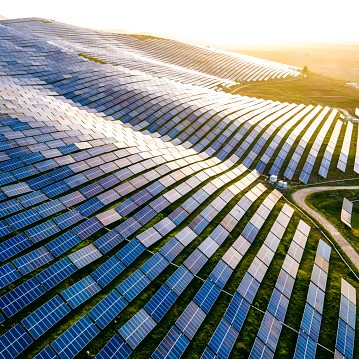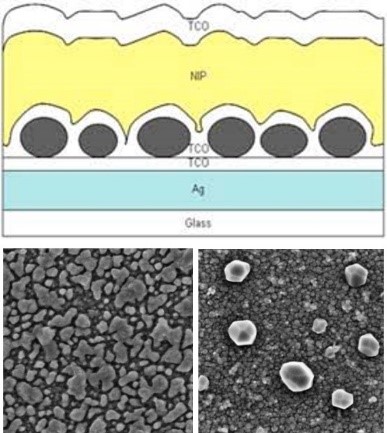Energy
 The development of innovative materials for the energy scenarios of the future today plays a leading role in the green transition. Among the various challenges for sustainable progress there are certainly new materials that improve the performance of light-energy conversion, nanostructured materials that can catalyze water electrolysis and hybrid systems capable of accumulating large amounts of energy in very small volumes. In all these research fields, the physics of matter allows an investigation that is always original and winning for the in-depth understanding of the structural and electronic properties at play.
The development of innovative materials for the energy scenarios of the future today plays a leading role in the green transition. Among the various challenges for sustainable progress there are certainly new materials that improve the performance of light-energy conversion, nanostructured materials that can catalyze water electrolysis and hybrid systems capable of accumulating large amounts of energy in very small volumes. In all these research fields, the physics of matter allows an investigation that is always original and winning for the in-depth understanding of the structural and electronic properties at play.
Innovative Materials for Photovoltaics

Faculty: S. Boscarino, M.C. Spadaro, A. Terrasi
TTransparent conductors (TCOs) are materials currently used in numerous technologies, particularly in photovoltaic cells. An important aspect related to the application of these materials in photovoltaic cells is related to the absorption of light radiation from the sun. Some of the studies also focus on alternative materials in this field, such as nanostructured Zn3P2. To improve the absorption of radiation regardless of the transparent conductive material used, the concept of "light trapping" can be exploited. A very promising light trapping approach is based on plasmonics, i.e. the exploitation of the optical properties of suitable layers of metal nanoparticles, produced in specific regions of the device, to increase the intensity of the radiation in the semiconductor layer by means of near-field effects caused by nanoparticles. This activity aims at the integration of innovative TCOs (IZrO, ..) and metal nanostructures (Au, Ag, Cu, Al) and optimization of the corresponding characteristics in view of increasing the efficiency of photovoltaic cells. Some of these activities benefit from studies by transmission electron microscopy to obtain information about their atomic arrangement, structure and composition at atomic resolution thanks to a collaboration agreement with the Institut Català de Nanociència i Nanotecnologia (ICN2) in Catalonia (Spain).
Nanostructures for Green Hydrogen
.jpg)
Faculty: S. Boscarino, E. Bruno, S. Mirabella, F. Ruffino, A. Terrasi
The trend towards decarbonisation is pushing towards new sources of clean energy, such as the production of green hydrogen. The experience in the creation of innovative nanostructures and the most recent experience in the field of electrochemical measurements has allowed the group to invest in this field. In particular, various types of metal oxide-based electrodes (NiO, WO3, ZnO, ...) are manufactured, studied and tested to be used to generate water splitting and thus activate the Hydrogen evolution reaction (HER) processes and the concomitant Oxygen evolution reaction. (OER) for the production of green hydrogen. Recently, other nanomaterials based on Cu, Mo, Fe (metals, metal oxides, sulphides, carbides) obtained, in a circular economy perspective, from waste materials have been used as efficient nanocatalysts of HER and OER reactions.
Energy storage Materials
.jpg)
Faculty: E. Bruno, G. Mineo, S. Mirabella, F. Ruffino
The capacity of energy storage in ever smaller volumes pushes research towards innovative and efficient systems for a real energy transition. In particular, great emphasis is devoted to the study and development of (nano) materials for the accumulation of hydrogen (by electrochemical way) with particular reference to non-critical materials and sustainable synthesis methods. Among the materials of interest there are nanostructures based on metal oxides (for example WO3 and ZnO), or carbonaceous systems catalyzed by decoration with pure metal nanoparticles (Ni, Pd, Pt) or multimetallic (PdPt, NiMo).